Horror stories about smoking synthetic incense or potpourri were spreading long before Hollywood actress Demi Moore linked her famous face to the phenomenon. She went into seizure on Jan. 23 in Los Angeles, and a friend’s 911 call included this description: “She smoked something. It’s not marijuana, but it’s similar to incense, and she seems to be having convulsions of some sort.” In news reports, the friend described Moore as semi-conscious, convulsing, shaking, hot, and not breathing normally.
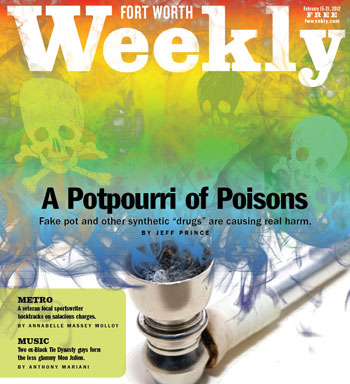 Fort Worth Weekly’s blog site Blotch noted local scares related to smoking synthetic drugs known as K2 or spice back in May 6, 2010 (“Bad Trips On K2 Prompt 911 Calls”). Several Denton teenagers reported suffering seizures and blacking out after smoking what was a legal product back then. There were no immediate comments from readers. But here and there, over the next year, comments were added by people who had tried spice, freaked out on a bad trip, went online to research, stumbled across our blog post, and left desperate warnings. Eventually, a dozen readers described spice-induced meltdowns between June 2010 and December 2012.
Fort Worth Weekly’s blog site Blotch noted local scares related to smoking synthetic drugs known as K2 or spice back in May 6, 2010 (“Bad Trips On K2 Prompt 911 Calls”). Several Denton teenagers reported suffering seizures and blacking out after smoking what was a legal product back then. There were no immediate comments from readers. But here and there, over the next year, comments were added by people who had tried spice, freaked out on a bad trip, went online to research, stumbled across our blog post, and left desperate warnings. Eventually, a dozen readers described spice-induced meltdowns between June 2010 and December 2012.
“I’ve tried a couple of trippy things before but nothing like this. Anyone else hallucinate off of K2 before??” — liljosh
“Very strong panic attack… I will never smoke it again.” — David
“I still don’t feel right.” — ikey
“It was the worst high I have ever felt…I HATE that shit.” — sarah
“He started puking uncontrollably and every muscle in his body was twitching. This lasted for about an hour.” — Ash
“After one bad trip, I will never smoke it again or suggest it to anyone. Stay away from this SHIT.” — Hardkore
“ I just don’t think spice is meant to be smoked.” — pmer
Pmer is right. Spice isn’t meant to be smoked — it says so right there on the package. A more eloquent warning (and better explanation) comes from former Clemson University professor John W. Huffman, whose lab research in the 1990s led to the creation of a synthetic version of marijuana. Those compounds were identified with Huffman’s initials. JWH-018 and others would eventually be banned by the U.S. Drug Enforcement Agency.
Huffman was once quoted describing smokers of spice as potential winners of “Darwin Awards” who would “do a service to humanity by removing themselves from the gene pool.”
The professor was more subdued but no less clear when contacted by the Weekly.
“I want to stress that these compounds were not meant for human consumption,” he said. “Their effects in humans have not been studied, and they could very well have toxic effects. They absolutely should not be used as recreational drugs.”
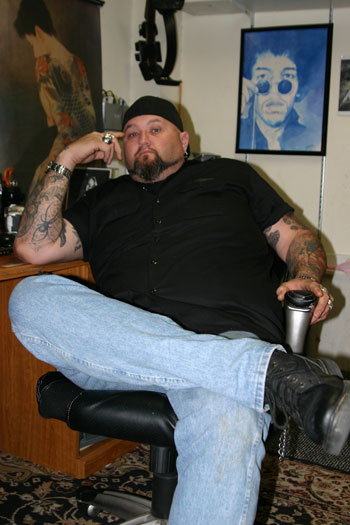 The JWH compounds were shared and discussed in scientific circles and eventually spread into the public sector. Manufacturers began spraying the compounds onto herbs and plants, making legal if mutated versions of marijuana that could be smoked without showing up on drug tests. Teachers, cops, doctors, and anybody else could get high without the risk of illegal drugs being detected in their bloodstream. As the Weekly described in a cover story (“The Real Deal on Fake Pot,” March 24, 2010), kids loved the stuff because they could openly buy it and smoke it without getting into legal trouble.
The JWH compounds were shared and discussed in scientific circles and eventually spread into the public sector. Manufacturers began spraying the compounds onto herbs and plants, making legal if mutated versions of marijuana that could be smoked without showing up on drug tests. Teachers, cops, doctors, and anybody else could get high without the risk of illegal drugs being detected in their bloodstream. As the Weekly described in a cover story (“The Real Deal on Fake Pot,” March 24, 2010), kids loved the stuff because they could openly buy it and smoke it without getting into legal trouble.
The industry took off. Companies cranked out their own versions of synthetic drugs, widely distributed in Germany and the United Kingdom before flooding into the United States in 2008. Soon to follow in popularity were synthetic cocaine and methamphetamines, referred to as “bath salts,” that could be snorted or injected.
At first the DEA moved slowly. States, including Texas, passed laws to ban spice sales before the first federal action took place. But as the number of spice users escalated and the bad-trip stories surfaced, the DEA made its move in March 2011. JWH-018, JWH-073, JWH-200, and other compounds were listed as Schedule I drugs, making them illegal to sell or possess.
Sellers resisted the ban. A national retail group blasted the federal government on ABC’s 20/20 and described spice as safer than peanuts or other foods that cause allergic reactions. Banning spice would simply drive the industry underground, the association warned. Doctors and drug officials countered that synthetic stimulants were largely unregulated, coming from uncertain sources and causing widespread medical concerns.
Incense, potpourri, and bath salts are still easy to find — designer drug manufacturers continue to simply replace the banned compounds with new ones not found on the DEA list. Some are currently sold under descriptions like “spiritual dust,” “herbal tea,” “mood enhancers,” “air freshener,” and even “mosquito caps.” Online sites abound, offering “cannabinoid-free” products at about $10 a gram. And it’s easy to find locally. Convenience stores, gas stations, and smoke shops around the Metroplex still stock the fake pot and, to a lesser degree, fake coke and meth. Some display it in the open, others more discreetly.
I walked into a convenience store on Riverside Drive recently and asked for potpourri. The clerk said he didn’t know what I was talking about. Spice, I said, fake pot. He reached into a box hidden behind a clutter of stuff on the counter and pulled out a small container of herbal tea — $15.99 for three grams.
“This is legal,” he said.
Maybe it is. Maybe not. The legality of such products is a gray area, a gamble for merchants and buyers, as evidenced by recent events in Bedford and Azle.
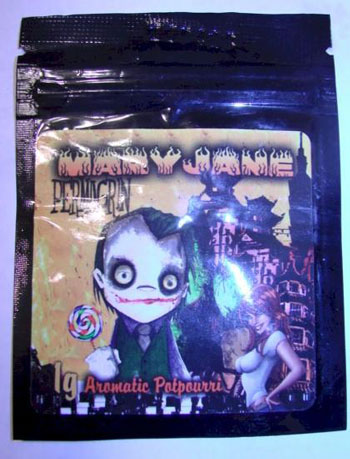 Earlier this month, Bedford police served a warrant on The Dragons Breath smoke shop, confiscating potpourri products and store computers, as well as money from the store’s two safes (“Breathing Down Their Necks,” Feb. 8, 2012).
Earlier this month, Bedford police served a warrant on The Dragons Breath smoke shop, confiscating potpourri products and store computers, as well as money from the store’s two safes (“Breathing Down Their Necks,” Feb. 8, 2012).
“It’s a witch hunt to find any way they can to run us off,” said the store’s assistant manager Charles “Chief” Clark.
Police gave the store a list of the banned substances late last year. When police continued to receive complaints of spice sales at the store, an undercover officer went to buy some. Store managers said they removed any products that contained the banned substances but continued selling other variations.
Police sent the spice to a lab. Deputy Chief Eric Griffin said it tested positive for a banned substance, and police served a warrant on Feb 1. Manufacturing, selling, and possessing the banned substances are misdemeanor offenses with penalties up to $4,000 and a year in jail.
“The shops are having a hard time,” said Kurt Kleinschmidt, chief of medical toxicology at UT Southwestern Medical Center at Dallas. “They can’t put the illegal K2 on their shelves, but there are plenty that are not illegal that they can.”
Manufacturers sometimes lie about the ingredients on the packaging, he said.
“The smoke shop owners don’t know what’s in it,” he said. “You never really know which synthetic cannabinoid you’re going to get.”
Kleinschmidt talks to labs that test the products and said analyses commonly find banned substances as well as new strains. He provides consultation services to the North Texas Poison Center Network that offers emergency treatment information to residents for poisonings or toxic exposures. He’s convinced of the drugs’ dangers, citing a lack of quality control during manufacturing. Local hospital emergency rooms continue to regularly treat spice smokers, he said. The effects of the new synthetics are far different from the mellow glow of pot that users may be expecting.
“This is not your mama’s marijuana,” Kleinschmidt said. “This doesn’t act clinically like marijuana. People who take marijuana are relaxed, or their heart pressure might go up a little bit. This stuff, we see people become very agitated. It’s a stimulant. Heart pressures are way up. They are coming in in very agitated states. It’s more similar to the methamphetamines.”
Bedford police Lt. Kirk Roberts wouldn’t reveal the test results from the product that was confiscated earlier this month at The Dragons Breath.
“It’s still under investigation as to whether it will be presented to the district attorney’s office. And then it will be up to them,” he said.
The Dragons Breath is Bedford’s only smoke shop, and for now the city appears to be free of fake-drug products. But anyone wanting to smoke synthetically altered herbs doesn’t have to drive far.
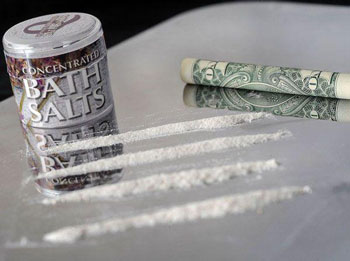 Azle police arrested a 23-year-old resident for possessing spice on Feb. 8 during a traffic stop. The man admitted to possessing “synthetic marijuana” and handed over his stash, the police report said. Police arrested him, took him to the Azle jail, and charged him with possessing less than two ounces of a controlled substance. The Class B misdemeanor carries a maximum sentence of 180 day in jail and a $2,000 fine, upon conviction.
Azle police arrested a 23-year-old resident for possessing spice on Feb. 8 during a traffic stop. The man admitted to possessing “synthetic marijuana” and handed over his stash, the police report said. Police arrested him, took him to the Azle jail, and charged him with possessing less than two ounces of a controlled substance. The Class B misdemeanor carries a maximum sentence of 180 day in jail and a $2,000 fine, upon conviction.
While getting a copy of the Azle police report, I struck up a conversation with an employee. She said a close relative of hers died last year after ingesting the synthetic drug. She didn’t want to be interviewed about it, however, saying she was still too distraught.
Azle police passed out a list of banned substances after the city’s spice ban took effect in 2010. Police gave the stores time to clear their shelves and then began confiscating the product. Eventually the city appeared to be rid of K2 merchants. But the city’s main drag is FM730 North, where stores on the east side of the street are inside the city limits but stores located on the west side are outside. Some of those westside stores continue to stock spice.
The Weekly went to the 23-year-old’s apartment last week to try to get an interview. He wasn’t home, but the young woman who answered the door said her boyfriend bought the spice at a grocery store on the west side of FM730. The store, Always Super Save, sells groceries but also has a smoke shop attached to it with a separate entrance. Store manager Renee Dake said the smoke shop sells spice from the maker Mary Jane, with brand names such as Voodoo, Candy Jane, and Burny.
“It comes with lab paperwork,” she said. “We do a lot of research on ones that are legal. We don’t sell any that are illegal.”
She seemed surprised when told that a local man was arrested for possessing a product allegedly purchased at her store that police said had tested positive for a banned synthetic cannabinoid.
“I’m going to have to check that out,” she said.
********
News media around the country have described murders, suicides, heart attacks, and others tragedies that occurred after people reportedly ingested spice. Emergency calls to the American Association of Poison Control Centers are increasing as well. In 2010, the association reported more than 2,900 calls to poison centers from people suffering ill effects from synthetic marijuana. That number more than doubled to almost 7,000 in 2011.
A group of doctors in the toxicology division at UT Southwestern Medical Center in Dallas published a myocardial infarction study on synthetic cannabinoid in 2011 and associated spice smoking with heart attacks in adolescents. The study described a “lack of information about the complete chemical composition and toxicology of the chemicals contained in these products.”
Laws may or may not be stemming the tide of synthetic drug sales, but the horror stories are having their own impact. The Weekly first reported on spice’s popularity in its 2010 cover story before Texas and the DEA had passed statutes to ban it.
Back then, a handful of co-workers and I went out behind the office and smoked several joints of K2. Reactions varied. Some liked their buzz, some felt nothing, and at least one — me — complained of a slight headache. But nobody went into convulsions.
Now, almost two years later, I asked some of the same co-workers and a couple of others if they’d be interested in trying spice. No takers. Some were scared by the reports of bad trips. One co-worker said he’d quit smoking spice after suffering a massive panic attack that left him lying in the fetal position in his bathroom shower for 25 minutes while waiting for the effects to wear off.
A few nights ago I talked to an old friend who is a recreational marijuana smoker — nothing heavy, just the occasional toke here and there. She’d attended a party a week earlier where somebody offered her some spice. She took a few puffs.
“My whole body started tingling, and I felt really weird,” she said. “I hated it. I’ll never smoke it again.”
Other people continue to smoke it, sell it, and make it, and the cat-and-mouse games will continue for the foreseeable future. But the DEA, police, lawmakers, and the medical community have spice in their sights, and that isn’t changing anytime soon.



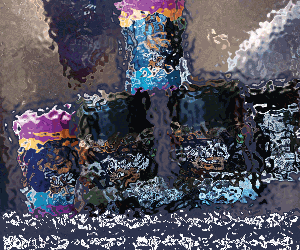
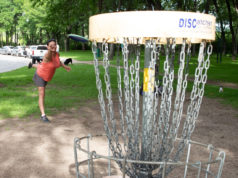







Spice is nice! Ginmmmme
I a almost 50 years old,just had aseizure from one big hit of spice,threw up and my sister and her hubbie said I blacked out for about a minute,I’ve used a lot of heavy drugs in my life and never had anything like that happen before
*There is no added stress of experiencing to drive anywhere to obtain
the money into the account. Unfortunately financial hardships eventually most of us at
some stage in our lives, so that it is feel impossible
to get around them.
I this stuff is supposed to be banned in Texas, then why is it being sold at Mr. Nice Guys in Abilene?
Potpourri Incense are prepared with the finest, organic and unusual legal organic herbs and come in attractive fragrances and scents. Potpourri incense also comes in different fragrances and scents and is used to generate homes with comfort and soothing scents in the most organic way.
This is an epidemic and there should be a facility for kids to get off of this crap. I know the first step is to recognize there is a problem and to want to stop. My 18 yr old smoked this with one of his friends who was trying to get a job without having a dirty UA test. How I wished this friend would have never came to the house. What can be done to help our kids. Do they have to suffer a heart attack and psychological problems to get this crap off the streets and the so called underground retail creeps aka store owners that just want to make a buck on the blood, sweat, and tears of the parents that the kids belong to. Please contact whoever you can to draw attention to this problem. It is dangerous and way out of hand.
i tried a blend called pure fiyr, the first 2 min scared the shit outta me, i screamed for my dad told him i was about to die, then the hallucenations took me to my own personal hell.
At first my sister said I was screaming and throwing my limbs in all different directions trying to hit her. I don’t know what happened, I wasn’t conscious. Then, I picked up a pair of scissors and stabbed my sister in the face. I woke up in the emergency room next to my sister, who now has a huge gash on her face. …If only I hadn’t wanted to try bath salts… *crys*